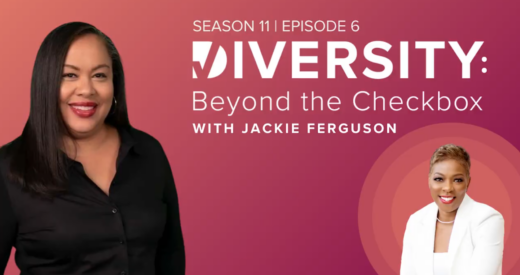Nick Celenza, 80, rises at 6 a.m. every day, and on five of those days, he heads to work at Parker LORD, a technology and manufacturing company in Cary, N.C. The electrical engineer, who spent more than 30 years working for IBM, started his most recent job roughly three years ago.
“We work on government programs, government helicopters – actually troop carriers – and I design and test electronic circuits for that,” he says. “The reason I’m working is not because I need the money necessarily, but because it keeps me active.”
Celenza’s forty-hour workweek is unusual, even for people a decade younger than he is, but it doesn’t have to be. There is strong evidence that working past 65, the traditional retirement age, benefits employee and employer both. Unfortunately, age discrimination, age-related bias, and stubborn stereotypes can make finding and keeping a job difficult for older workers.
“Companies are leaving talent sitting on the curb and are driving right by. All they have to do is stop and let them in,” says Ben Wiant, founder of The 3 Doors Job Search.
Wiant is a career transition consultant and former recruiter. Since launching his business in 2020, he has supported professionals in job transition by training them on the fundamentals of a successful job search. Most of his clients, roughly 60-70%, are executives and skilled professionals who are older than 50.
There are many reasons why employers should consider hiring older workers, and today’s tight labor market makes expanding the pool of job candidates even more necessary.
“If you’re having trouble filling roles, you’re probably not looking at the right people,” Wiant says. “It’s unfortunate that just because you can’t find the person that fits your preconceived idea of what that employee is, doesn’t mean that somebody that can do the job isn’t out there.”
The labor market is shrinking: here’s how employers can adjust
It’s no secret that companies are struggling to fill jobs. In March, Federal Reserve Chairman Jerome Powell called the tight labor market “unhealthy” and noted that there were nearly two job openings for every unemployed person.
In the wake of the pandemic, there are simply fewer people looking for jobs. More than a million women left the workforce during the pandemic and haven’t returned. At the same time, older workers retired in droves.
“The Great Resignation wouldn’t have happened if there hadn’t been a great retirement or a great redundancy. In fact, during the pandemic, we had an excess, an extra 1.5 million retirements than we would have had during a normal period,” demographic futurist Bradley Schurman tells host Jackie Ferguson on the “Diversity Beyond the Checkbox” podcast.
Schurman is an expert on longevity and the founder of The Super Age, a global strategic advisory firm. He helps organizations understand how shifting demographics and mega trends are remaking social and economic norms. He’s also the author of the book, The Super Age: Decoding our Demographic Destiny.
“We’re entering into a new period for humankind where our societies are getting quite old,” Schurman says. “We’re having a lot fewer babies than ever before. Our birth rates are at their lowest point in human history, in most of the Western world,” he says. Also, “due to scientific innovation, social innovation, clean water, and access to food, we have an incredibly high survival rate now through childhood. Many of us live into adulthood more than ever before, and this is allowing us to live much longer lives.”
Fewer young people means fewer job seekers, a trend that Schurman says the pandemic exacerbated. By 2030, he projects that the 75-plus workforce will double in the U.S., and the under-24 population will contract by about 8%.
“We’ve had a glut of labor in the U.S. workforce since roughly 1962, when the first Boomers started to come [into the workforce.] At the same period we had globalization. All of this created an abundance of labor,” he says. “All of these countries are starting to shrink now; their labor force is starting to contract. Those days of cheap, readily available labor are gone.”
To fill empty roles, manage rising labor costs, and stay productive, Schurman says businesses should hire more older workers and encourage folks who are already working to stay on the job. The first step toward those goals is to let go of false narratives and stereotypes about aging.
Let go of your bias: Older workers offer value, wisdom, and stability
The most common assumption Wiant hears from hiring managers is that older employees cost more than younger workers. However, that generalization fails to consider the many additional ways that older workers can contribute to the company.
“Often, people are only looking at the price, and they’re not looking at the value that they get for that price,” he says. “If the person could do the job of two people, and also provide mentorship, guidance, and some problem-solving, maybe you get the same amount of productivity and insights for the same price as you would have to pay for two younger workers?”
Added to their valuable experience, some older workers are willing to accept a smaller salary, because they want to stay mentally active and mentor younger people. But even in these situations, Wiant says hiring managers rarely believe the job-seekers.
“Every senior-level person I’ve ever talked to says, ‘The money is not important. I need to be paid fairly. I don’t need to make what I used to make. I want to add value and bring my experience to bear in a positive way.’ I hear some variation of that almost universally,” he says.
Hiring managers tell him equally often that hiring older candidates at a lower rate – even if the person agrees – is too risky. They think if they hire someone at a below-market salary, then that person will leave when they are offered more money elsewhere. Hiring managers say they prefer to hire someone younger, who they can keep.
“But then they don’t balance that with the fact that most junior-level employees are going to be gone in two to five years anyway,” Wiant says.
Their experience and perspective make people in their 50s or 60s especially helpful for small, growing businesses and young entrepreneurs, he adds. Those who have worked at large companies can provide insight into organizational processes, and they frequently have strong management skills that a younger leader could emulate. Because they have seen what is effective and what isn’t, workers from older generations hold great potential to help shift workplace culture to be more productive, effective, and efficient.
Instead, Wiant says hiring managers often feel threatened by people significantly older than themselves, and won’t consider them.
“I want them to see, ‘This is somebody who’s been there, done that, and I can learn from this person. I don’t care if I’ve only got this person for the next 18 to 20 or 36 months until somebody else hires them away. I’m gonna milk every single piece of value that I can out of this person, and have us all come out better for it in the end,’” he says. “But that’s not the conversation that’s happening, not often.”
Unfortunately, unconscious bias is common in the hiring process, Wiant says, even if there is no blatant discrimination. But companies are missing out on top talent when they overlook qualified, older job candidates.
“If people are saying they’re not finding the right employees, and if they haven’t looked at the older generation of people that have been there, done that, and can hop right into their organization to do it, then they’re making decisions against their best interests,” he says.
From the expert: 10 reasons to hire people older than 55
Other widespread myths portray older workers as reluctant to learn new technology, lacking creativity, unreliable, unmotivated, and resistant to change. Several studies have debunked these pernicious stereotypes, and are, as one Forbes writer puts it, “total nonsense.” In reality, older workers tend to be adaptable, creative, productive, eager to learn, and ready to pass on their knowledge.
Mike Komives is an older adult employment specialist at the Orange County, N.C., Department of Aging. He meets with employers regularly, and counters biased stereotypes with the following reasons to hire older workers.
- Existing knowledge and real-world experience. Older workers’ wealth of experience enables them to be better problem-solvers and helps them absorb new information.
- Quicker and faster contributions. They are easier to train and can begin contributing to the team faster.
- More productive and reliable. One international study showed that older workers were more consistent and less erratic than younger workers.
- Loyal and prefer to stay in jobs longer. Once they have made a commitment to an employer, it takes a lot for them to leave a job.
- Serious about work relationships. Older workers generally put effort into getting to know colleagues and those they will be collaborating with.
- Insight into customer population or client base. Because the population is aging, having older workers who can relate to customers who are over 50 makes businesses more profitable.
- Tend to be more emotionally stable, patient, and resistant to stress. Because older workers have lived through many crises, they have learned to manage their emotions and focus on solving the problem. There is less ‘drama’ and more teamwork.
- Less expensive in the long term. Older workers stay in a job longer, are less expensive to train, and many are already on Medicare, so health costs are lower. In addition, many older workers aren’t as motivated by money as are younger workers.
- Able to develop and mentor younger workers. Older workers are often happy to pass on their knowledge to younger colleagues.
- Larger and deeper networks of professional and personal connections. When business is all about ‘who you know,’ older workers have valuable contacts.
Best practices: How companies can attract and keep older employees
For companies looking to retain older workers, a good first step is to address unconscious bias by educating managers, team leaders, and other stakeholders about the advantages older employees can bring to the workplace. Organizations should also consider non-traditional work arrangements, which can help leverage the expertise of skilled older workers. If salaries are a concern, managers might explore part-time work, consulting arrangements, or mentorship programs with their senior employees.
In Japan, Mitsubishi Heavy Industries established MHI Executive Experts, essentially a consulting group that recruits veteran employees, including engineers, project managers, and executives who are at retirement age or older. These specialists are dispatched to various projects around the world to provide support and expert advice. In addition, MHI allows for both full- and part-time work, and makes accommodations for those who are unable to relocate.
“MHI’s older experts not only provide much-needed expertise and know-how, they also give on-the-job training and guidance to newer recruits, helping foster the next generation of specialists,” writes Shunichi Miyanaga, president and CEO of Mitsubishi Heavy Industries, in an article about the program for AARP.
Perhaps the most important factor in retaining older workers is to make them feel that their contributions are important. Parker LORD is committed to attracting diverse candidates and retaining the best talent, regardless of age. That philosophy benefits the company and older workers like Celenza, the 80-year-old engineer.
“Older workers bring decades of experience and unique skills that can only be developed over many years,” says Eileen Suazo, a spokesperson with Parker LORD. “Differences in age, gender, ethnicity and other qualities not only make us who we are as individuals, they are part of the unique and tangible value that each of us can offer as professionals in our careers.”
If you would like to explore how a robust diversity, equity, and inclusion (DEI) strategy can help your organization attract and retain top talent of all ages, get in touch with our team today.
Amber Keister is a Content Writer and Editor at The Diversity Movement. She has spent more than 20 years as a journalist for publications throughout the South. Connect with her on Linkedin.






